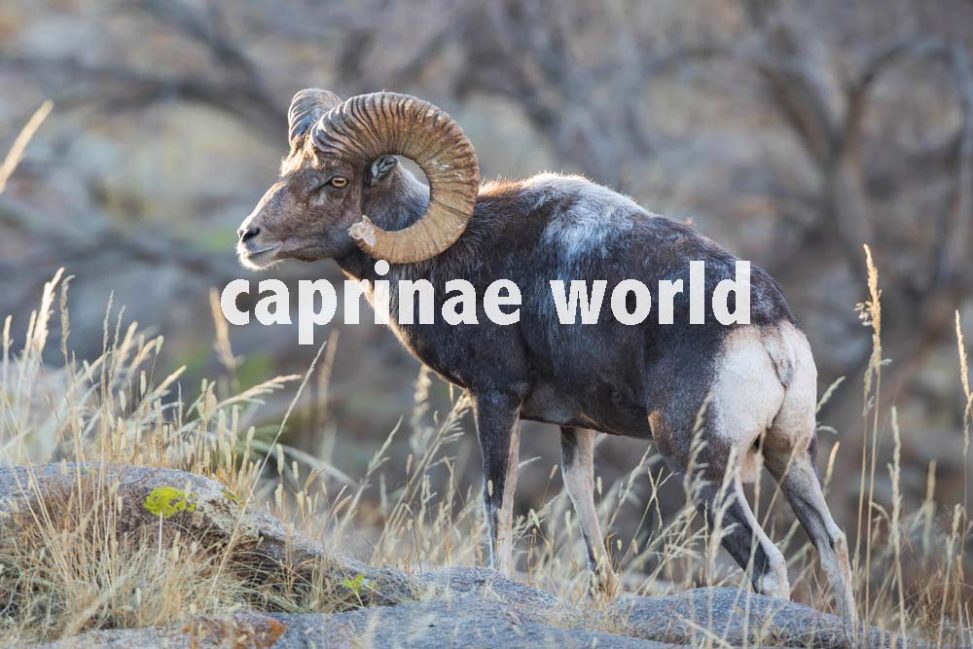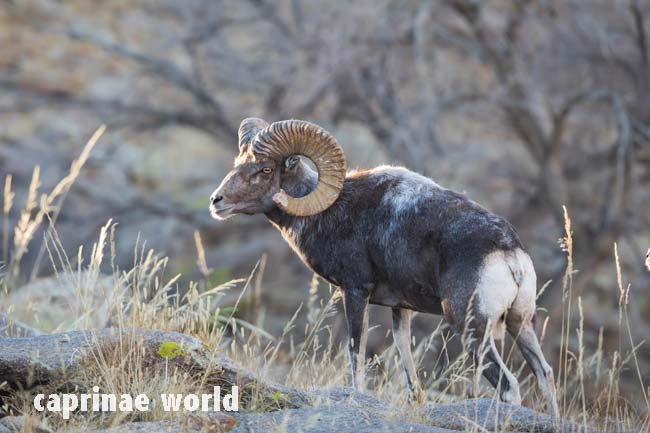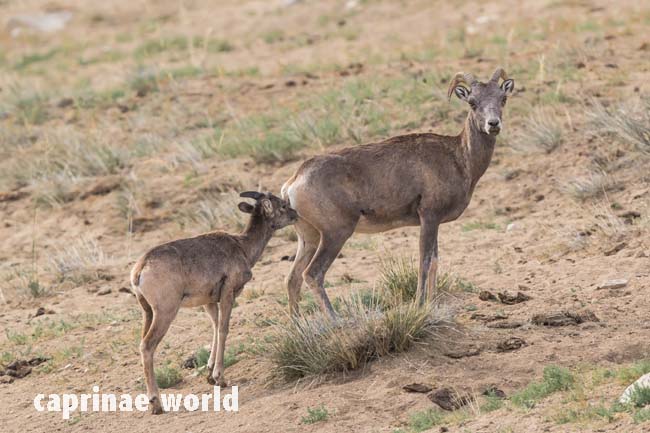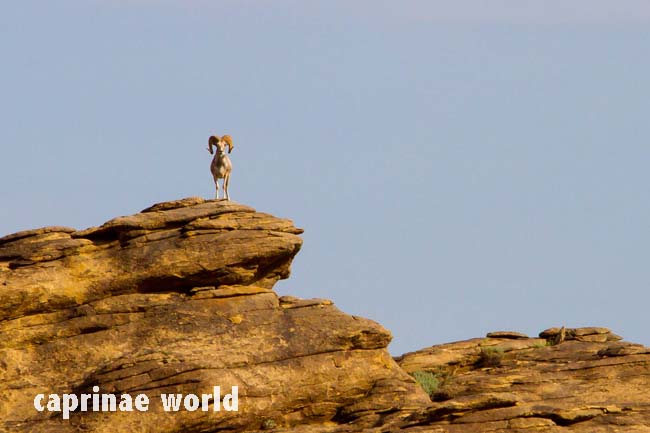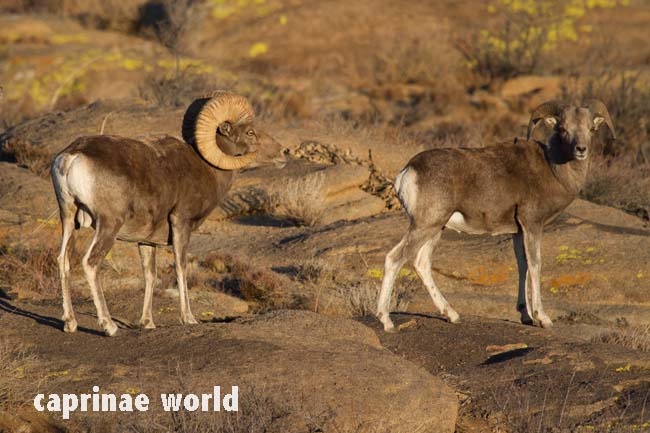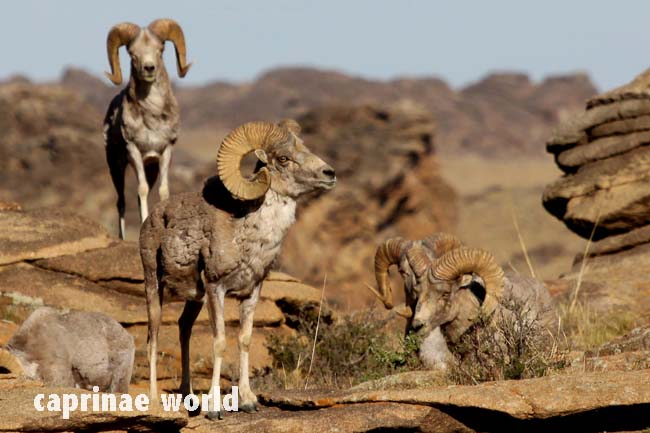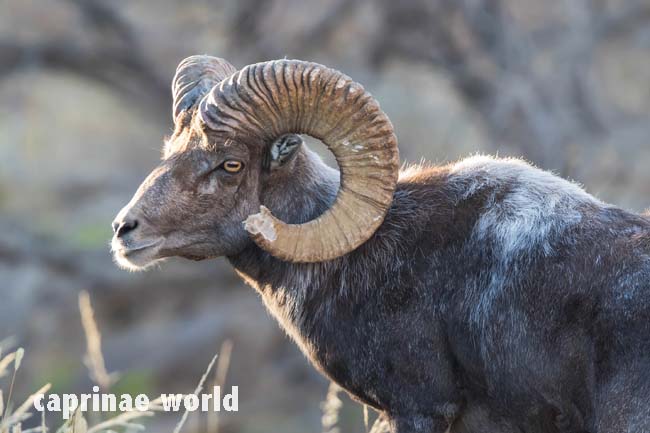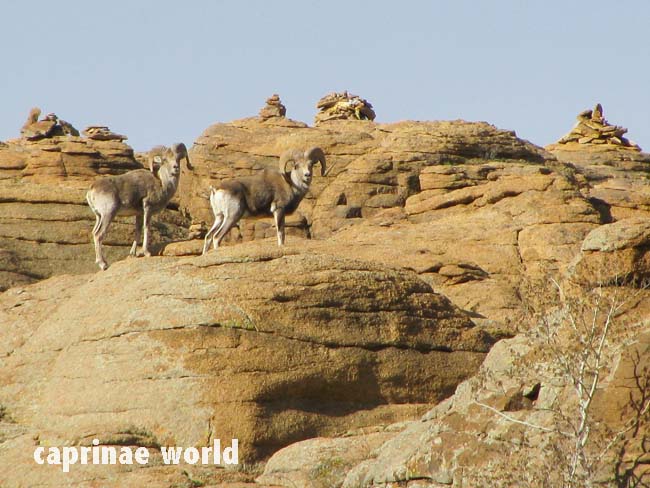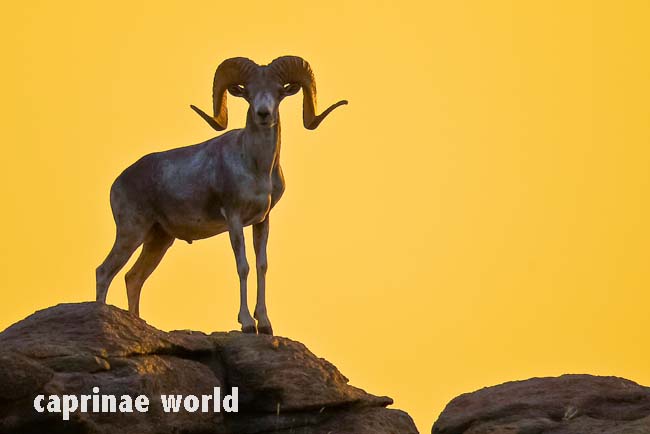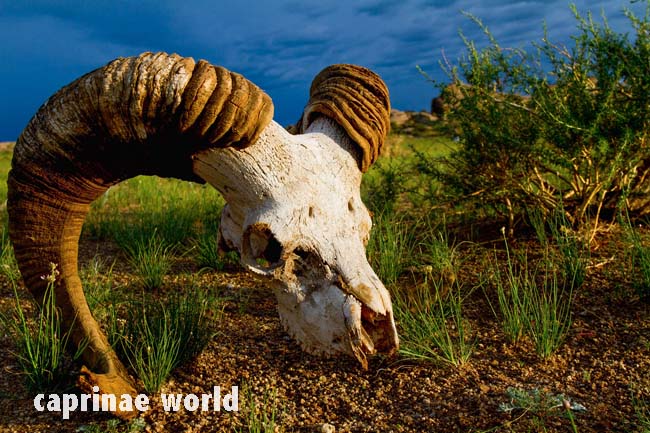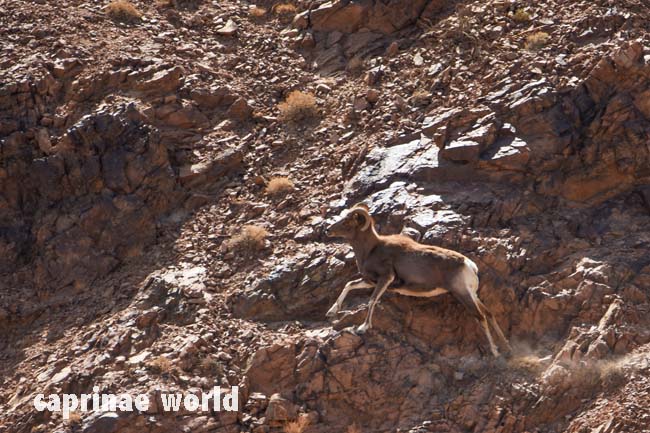Find below a series of photos of magnificent Gobi Argali.
Gobi ibex (C. s. hagenbecki): southwestern and southern parts of Mongolia including parts of the Gobi Desert and the Chinese-Mongolian border region. [1, 5]
Adult males in summer are yellowish brown above, fading on the sides to pale ochraceous and on the chest to buff. No saddle-patch. Older males are supposed to be darker. A narrow black line extends from the occiput (back of head) nearly to the base of the tail. The belly is clear white. Legs are blackish-brown on front side. The Gobi ibex has on average the shortest horns of all Asiatic ibex. [5] There is no winter pelage discription available.
Literature Cited
[1] Reading, R. & Shank, C., 2008. Capra sibirica. The IUCN Red List of Threatened Species 2008: e.T42398A10695735. http://dx.doi.org/10.2305/IUCN.UK.2008.RLTS.T42398A10695735.en. Downloaded on 25 April 2016.
[5] Damm, Gerhard R. and Franco, Nicolás, 2014: The CIC Caprinae Atlas of the World – CIC International Council for Game and Wildlife Conservation, Budakeszi, Hungary in cooperation with Rowland Ward Publications RSA (Pty) Ltd., Johannesburg, South Africa.

